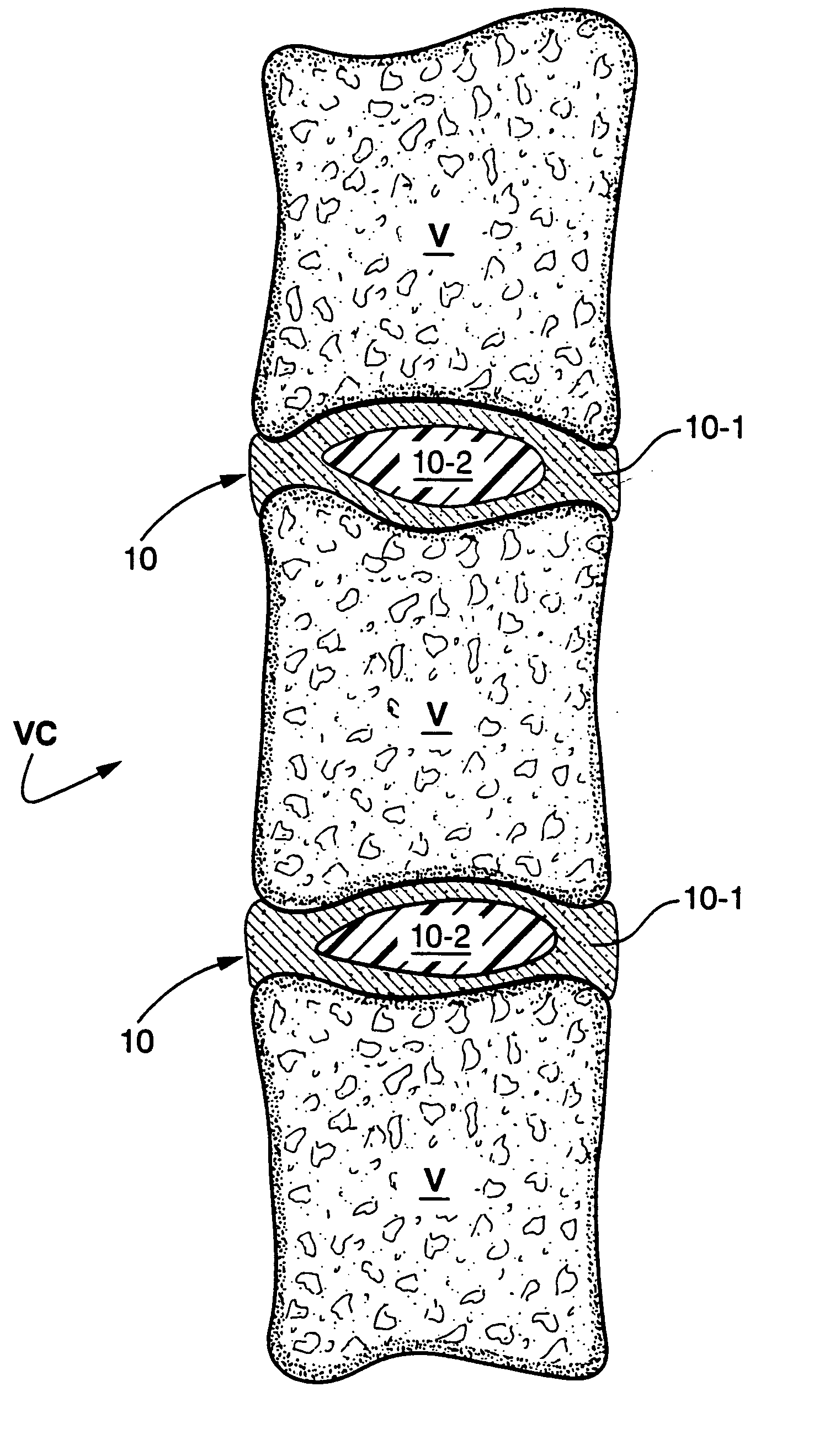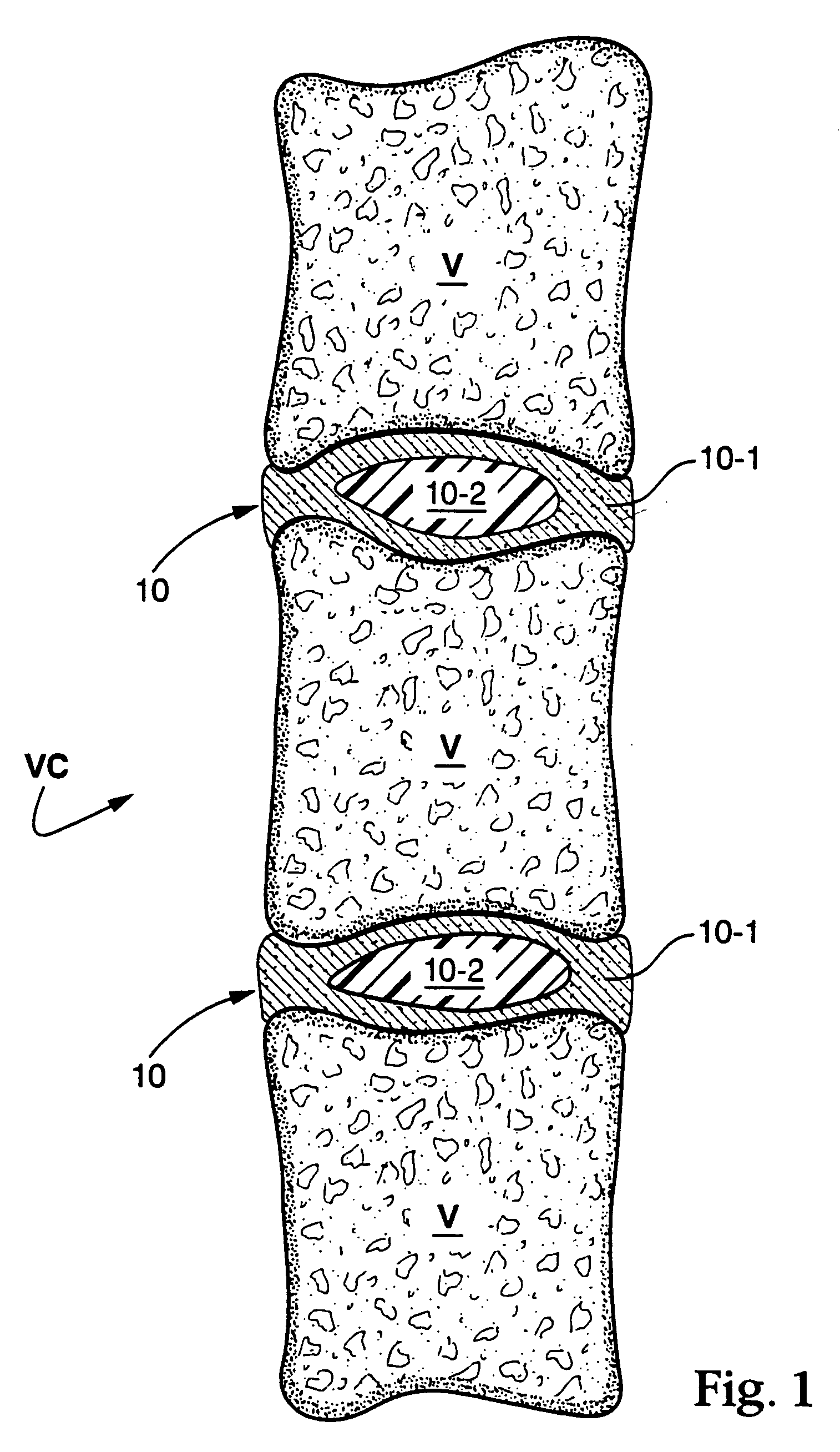In situ bioprosthetic filler and methods, particularly for the in situ formation of vertebral disc bioprosthetics
a bioprosthetic and in situ technology, applied in the field of bioprosthetics, can solve the problems of sudden collapse of disc height, degeneration of vertebral disc function, and potential nerve root and/or spinal cord compression, and achieve the effect of discharging the energy of impact loading
- Summary
- Abstract
- Description
- Claims
- Application Information
AI Technical Summary
Benefits of technology
Problems solved by technology
Method used
Image
Examples
example 1
[0031] A formulation formed of a protein solution (serum albumin) and a cross linker (gluteraldehyde) was contained in the separate chambers of a delivery device. When the device is triggered, the two components are expelled from their respective chambers into a mixing tip that combines the two solutions and mixes them as they travel over the static mixing elements present in the tip. A medical needle was attached to the mixing tip and the formulation injected into the distal space between the vertebra of an explanted pig spine. The tip can be attached to a needle, catheter, or other hollow tubular device for delivery, for example. After 30 seconds, the needle was withdrawn from the injection site. The material that was injected had polymerized in place and did not exude out of the needle hole. After 2 minutes, the disc-vertebra plate was dissected and the presence of the biomaterial seen.
example 2
[0032] Bovine calf spines were obtained from a commercial slaughterhouse and cleaned by blunt and sharp dissection to expose the vertebral bodies and the discs. A 4 mm hole was made into the anterior face of the disc and the drill bit allowed to enter to the center of the nucleus. The nuclear material was removed using surgical forceps and curettes. The hollow space was filled with the formulation described in Example 1. The material that was injected polymerized in place and did not exude out of the hole. After 2 minutes the disc-vertebra plate was dissected and the presence of the biomaterial seen.
example 3
[0033] Bovine calf spines were obtained from a commercial slaughterhouse and cleaned by blunt and sharp dissection to expose the vertebral bodies and the discs. The top and bottom of the vertebral bodies were cut parallel to each other at mid-height using a miter box to yield a bone / disc / bone motion segment. A 4 mm hole was made into the anterior face of the disc and the drill bit allowed to enter into the center of the nucleus. The nuclear material was removed using surgical forceps and curettes. The hollow space was filled with the formulation described in Example 1. The material that was injected had polymerized in place and did not exude out of the hole.
[0034] Once polymerization had occurred, the construct could be compressed by hand in the front-back and left-right axes, indicating flexibility was retained after repair of this segment. Then, the construct was placed in a biomaterials testing device (Instron electromechanical test station) and compressed repeatedly to a load o...
PUM
| Property | Measurement | Unit |
|---|---|---|
| Flow rate | aaaaa | aaaaa |
Abstract
Description
Claims
Application Information
 Login to View More
Login to View More - R&D
- Intellectual Property
- Life Sciences
- Materials
- Tech Scout
- Unparalleled Data Quality
- Higher Quality Content
- 60% Fewer Hallucinations
Browse by: Latest US Patents, China's latest patents, Technical Efficacy Thesaurus, Application Domain, Technology Topic, Popular Technical Reports.
© 2025 PatSnap. All rights reserved.Legal|Privacy policy|Modern Slavery Act Transparency Statement|Sitemap|About US| Contact US: help@patsnap.com


